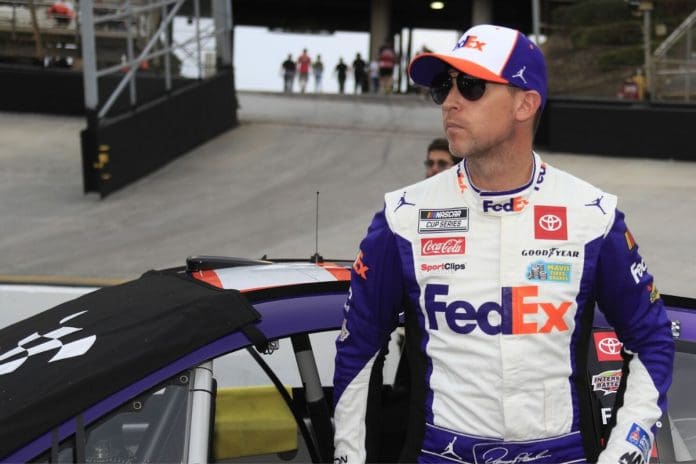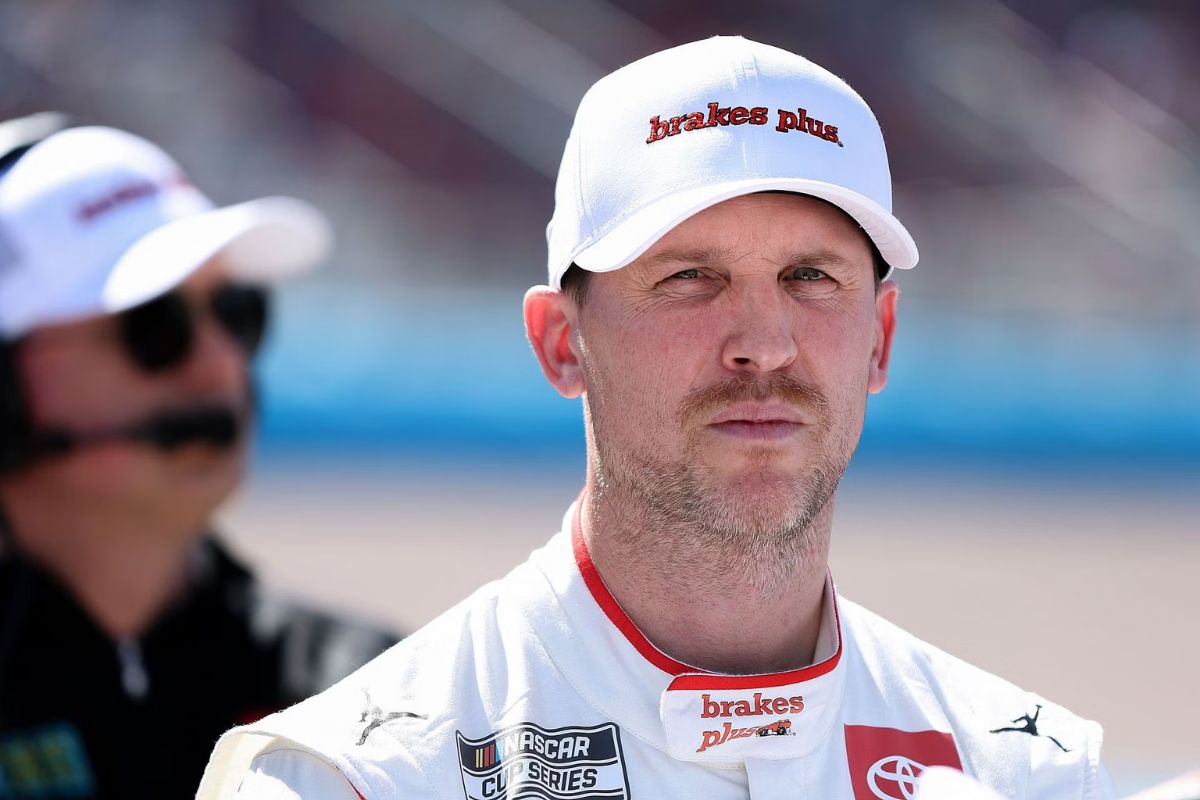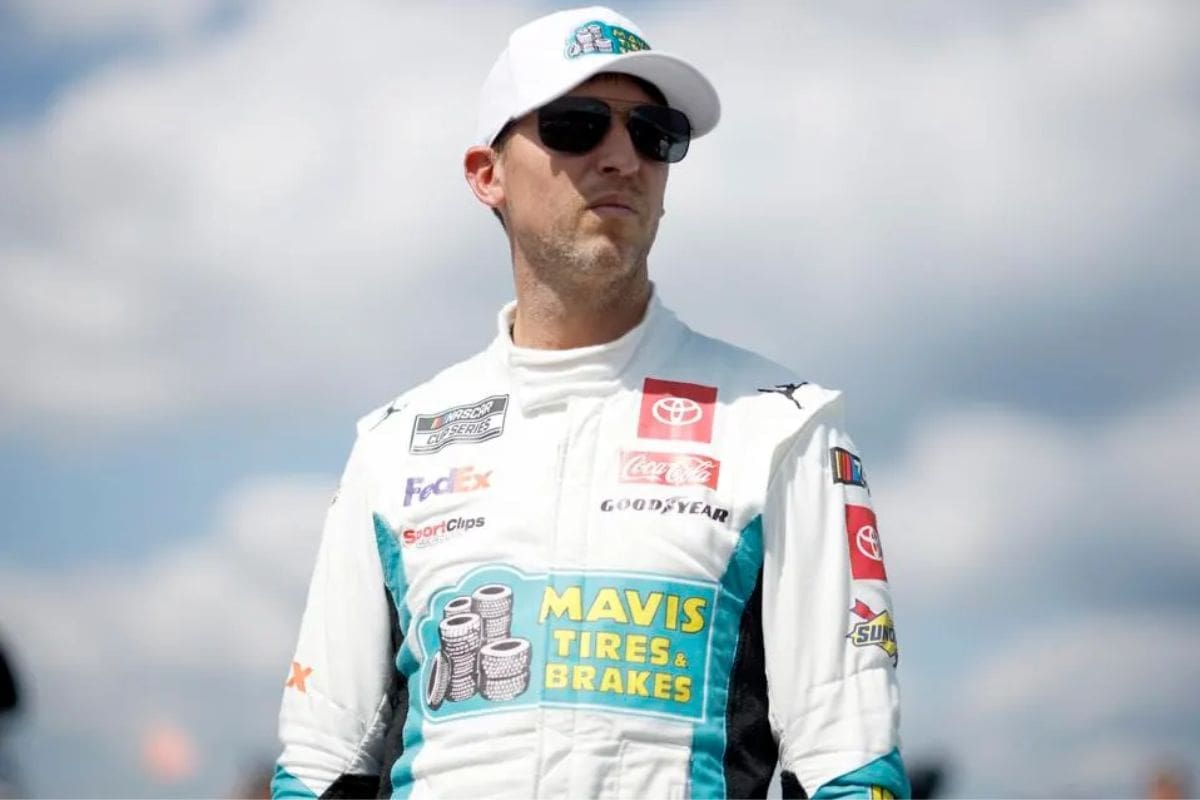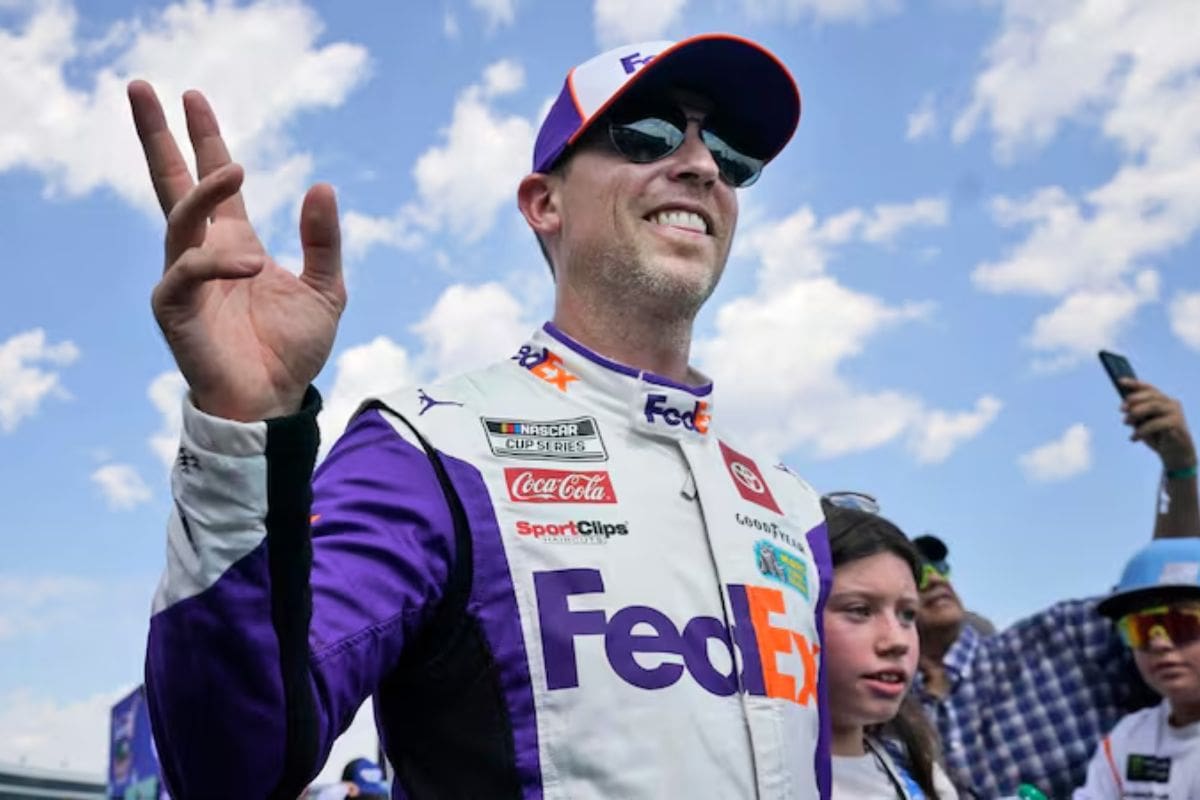Denny Hamlin’s Bold Call: Denny Hamlin’s active statement that NASCAR could benefit from a Formula 1-inspired makeover challenges the status quo, inviting a reevaluation of the fundamental aspects of NASCAR racing. By demanding for the introduction of strategic tire wear manipulation, Hamlin not only aims to enhance the excitement and unpredictability of short-track races but also suggests a shift towards a more strategy-driven competition. This proposal raises critical questions regarding the future direction of NASCAR, the balance between tradition and innovation, and how these changes could affect the competitive landscape. As the motorsports community considers Hamlin’s vision, the implications for drivers, teams, and the broader ecosystem demands a closer examination
Key Takeaways
- Denny Hamlin suggests manipulating tire wear to improve short-track racing dynamics.
- He believes this would add strategic depth and excitement, similar to Formula 1.
- Hamlin’s proposal includes softer tires and reduced downforce to enhance competition.
- Collaboration between NASCAR, Goodyear, and stakeholders is crucial for implementing changes.
- The goal is to align NASCAR’s evolution with competitors’ aspirations and spectators’ expectations.
The Short-Track Racing Spectacle
The short-track racing, with its heart-pounding proximity and aggressive overtakes, remains an undeniable spectacle in the motorsports world, despite the mixed performance of the Next-Gen cars this season. The unique appeal of short-track racing is not just in the speed, but in precision driving, strategic navigation, and the raw, unfiltered competition it presents. It strips racing down to its most primal elements, where the margin for error is very small, and the tension is high.
The introduction of the Next-Gen cars was assured to enhance this spectacle by offering improved performance metrics, including better handling and safety features. However, the reality has been a mixed bag, with the cars showing inconsistency in performance across various tracks. This has started debates within the motorsports community, raising questions about the adaptability of the Next-Gen cars to the unique demands of short-track racing.
Bristol and Richmond: Anomalies in Short-Track Action
Occasionally, odd as the unexpected tire wear at Bristol and the rain drama at Richmond broke the predictable flow of short-track racing. The situation at Bristol, with tires degrading at an unforeseen rate, presented teams with an unusual challenge. It tested their ability to swiftly adjust strategies, compelling pit crews and strategists to make crucial decisions under pressure.
Similarly, the inclement weather at Richmond introduced unpredictability that is often absent in short-track racing. The rain not only affected track conditions but also demanded a high level of mental fortitude from the drivers, who had to navigate the slippery surface while maintaining competitive speeds.
Contrastingly, the weary performance at Martinsville, where neither cars nor tires seemed to push the boundaries, served as a reminder of the fine line between the extraordinary and the mundane in motor racing.
Denny Hamlin’s Proposal for Tire Strategy
Hamlin’s insight into the tactical aspects of racing suggests a groundbreaking approach that could potentially transform the competitive landscape of NASCAR, particularly in the context of short-track events. By promoting for a strategic manipulation of tire wear, Hamlin is inviting NASCAR and Goodyear to explore the dynamics of racing performance and its direct correlation with tire management practices.
The proposal highlights the importance of tire strategy as a multifaceted tool for enhancing race excitement and unpredictability. Deliberate tire wear manipulation, as suggested by Hamlin, could introduce a new strategic depth to races, compelling teams and drivers to adopt more complex and varied strategies throughout the course of an event.
“I know that Formula 1 each weekend has an option right soft medium hard tire. And they decide what’s the best tire for them. Tell me why we can’t do the same it certainly maybe would create passing because if you gave us some soft options maybe two sets of soft options for the race this weekend clearly I know that it’s not going to last.”-(Denny Hamlin)
Hamlin’s idea is rooted in a desire to amplify the competitive nature of short-track racing, where the tire performance can have a significant impact on race tactics and outcomes. By encouraging a proactive approach to tire wear, NASCAR could see an increase in strategic pit stops, varying race paces, and a more tactical approach to overtaking and defending.
The Influence of Tire Wear and Downforce on Racing
Hamlin’s push for considerably softer tires than traditionally used in NASCAR introduces a variable with profound implications on race strategy and vehicle performance. Softer tires, by design, offer greater grip and faster lap times initially but degrade more quickly, necessitating more frequent pit stops and strategic tire management. This shift could dramatically alter the race’s tempo, introducing strategy that emphasizes tire conservation and timing of pit stops, similar to the tactical battles seen in Formula 1.
Moreover, the Next-Gen car’s reduced downforce plays an essential role in this equation. Lower downforce means cars are less planted to the track, which, when combined with softer tires, could enhance the driving skill required to manage tire wear while maintaining speed. This reduction in downforce also addresses the issue of ‘dirty air’ – the turbulent air left behind a car that can make close trailing difficult in high downforce settings. With less downforce, cars can follow more closely, potentially increasing overtaking opportunities and enhancing the spectator experience by promoting closer racing.
“Downforce while I agree with the general reason behind doing this- It creates less tire wear if you have less downforce. So, they needed to greatly soften the tire up (a) because of the less loads that NextGen has and (B) because we’ve taken even more downforce from the car than what it had before so we’ve got get-together. NASCAR and Good Year need to get together they need to get a separate driver someone is not even in the series go out there and test and they need to wear tires out.”-(Denny Hamlin)
A Call for Action and Expert Opinions
In light of Denny Hamlin’s innovative proposals, it is essential that NASCAR and Goodyear engage in a collaborative effort to explore the potential enhancements his suggestions might bring to short-track racing within the context of Next-Gen vehicles. The complexity of Next-Gen cars introduces a multifaceted challenge that demands a sophisticated approach to guarantee the evolution of the sport aligns with the competitors’ aspirations and the spectators’ expectations.
Expert opinions converge on the necessity of a methodical evaluation of Hamlin’s propositions. It is widely acknowledged that the interplay between tire composition and downforce levels has a significant impact on race outcomes, particularly in short-track scenarios.
News in Brief
Denny Hamlin’s innovative proposal to infuse NASCAR with Formula 1-inspired elements, particularly through the strategic employment of tire wear manipulation, offers a promising avenue for reviving the excitement and strategic depth of short-track racing.
Such an approach not only promises to elevate the competitive landscape but also to enrich the spectator experience by integrating a higher degree of unpredictability and tactical sophistication. This evolution could potentially mark a significant milestone in NASCAR’s ongoing quest for dynamism and audience engagement.
Our Reader’s Queries
Q. What is Denny Hamlin’s car?
A. Denny Hamlin commands the No. 11 Toyota under the banner of Joe Gibbs Racing in the NASCAR Cup Series. Additionally, he holds a co-ownership stake in 23XI Racing alongside NBA icon Michael Jordan.
Q. How rich is Hamlin?
A. Denny Hamlin’s net worth is estimated at $65 million, a testament to his multifaceted success both on and off the track. Alongside his racing achievements, Hamlin has ventured into various endeavors, contributing to his substantial wealth. Additionally, he holds the role of team owner at 23XI Racing, a prominent NASCAR racing team.
ALSO READ: Dale Jr. Unmasks Denny Hamlin’s Dark Side: Surprising Revelations





